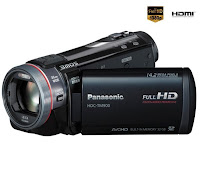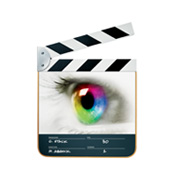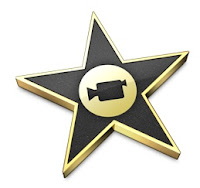Looking back at your preliminary task, what do you feel you have learnt in the progression from it to the full product?
Our preliminary task is very poor in contrast with the final edit of our film opening. Since then, I have learnt about film titles; the order in which they are importantly placed in and their timings, production company logos, the importance of the use of sound, mise-en-scene, costume and lighting to successfully set a scene and help draw the audience into a film, effective camerawork, various different editing programmes on the iMac; Final Cut and iMovie, and how to work productively in a team of film-makers, which I could use to my advantage within the final project.
For our preliminary task, as a team, we were very naive. We didn't do any research into genre, let alone consider genre at all. Whereas, we did a considerably greater amount of research in general for our final film opening idea which benefited to it's final outcome; looking like a professional, independent film opening. The preliminary task turned out to be more like a short film than an opening due to us not knowing how to arrange titles correctly, let alone any generic conventions used specifically in openings. We had to do alot of research to ensure our farce film opening was conventional according to it's comedy genre, target audience and it's independent funding.
Our film opening flows alot better than the preliminary task and it has more pace. The preliminary task was very slow due to the lack of planning and knowledge. In the planning stages of our film opening, we made not only a storyboard (as for the preliminary task), but an animatic storyboard using iMovie. Not only did this improve our editing skills on the iMac, but it made us more aware of the pace of our final cut; which we could then alter in these early stages if it seemed necessary. We did not have this privilege whilst creating our preliminary task. It also meant we knew exactly what shots we needed to capture (admittedly, after filming these shots, we did film some alternative shots as the original shots didn't give the effect we had envisaged) and what order they would follow on from each other whilst editing. This helped the process to be smoother and quicker.
We perfected the skill of match-on-action shots in our film opening. We were extremely happy with the outcome of our match on action shot of the nerd putting on his glasses after cleaning them. I think it flows extremely well and is very realistic. Our use of mise-en-scene and lighting has extremely improved from our preliminary task, also. More thought was put into the costumes and we thought about the setting and if we needed to use any extra light source in it although, luckily, the natural lighting was ideal for our film opening - which added to it's professional outcome.
Lauren Tween (6373) AS Media
Monday, 30 April 2012
Question 6
What have you learnt about technologies from the process of constructing?
 The whole Gemini team learnt how to use a variety of different technologies and equipment. The tripod, for example, was a piece of very helpful equipment we'd never used before and learnt how to use to our advantage within our film opening. It was very effective for the pan at the beginning of our final cut to ensure it was smooth, steady and professional-looking. At times however, we reverted to shooting some shots manually due to the tripod being unsteady on uneven terrain (see photograph).
The whole Gemini team learnt how to use a variety of different technologies and equipment. The tripod, for example, was a piece of very helpful equipment we'd never used before and learnt how to use to our advantage within our film opening. It was very effective for the pan at the beginning of our final cut to ensure it was smooth, steady and professional-looking. At times however, we reverted to shooting some shots manually due to the tripod being unsteady on uneven terrain (see photograph).
 The cameras themselves, we also had to learn how to achieve the best from. We knew the basics of using the cameras, however we experimented with different settings in order for the quality and lighting to remain as consistent as possible throughout the opening. Using the iMac enabled us to make alterations to the colour and hue also. As we were dependent on the natural lighting on our set, we did have to make some changes on the iMac due to the overcast conditions casting different light intensities throughout the clips.
The cameras themselves, we also had to learn how to achieve the best from. We knew the basics of using the cameras, however we experimented with different settings in order for the quality and lighting to remain as consistent as possible throughout the opening. Using the iMac enabled us to make alterations to the colour and hue also. As we were dependent on the natural lighting on our set, we did have to make some changes on the iMac due to the overcast conditions casting different light intensities throughout the clips.
 The fact we used an HD camera increased the professional look of the opening due to the images being captured very crisp and colourful. Pitiably, the quality was reduced when the videos were uploaded to YouTube due to the immense amount of time needed for them to be uploaded in high definition. The camera picked up sound very well and the playback was very clear.
The fact we used an HD camera increased the professional look of the opening due to the images being captured very crisp and colourful. Pitiably, the quality was reduced when the videos were uploaded to YouTube due to the immense amount of time needed for them to be uploaded in high definition. The camera picked up sound very well and the playback was very clear.
 In order to create the auditions video, we edited the various clips together using iMovie. Through doing this, we learnt how to cut and insert clips, add transitions, music, sound files and titling to the moving images or blank screens. The downside of iMovie was that you couldn't create different sound layers as easily as when using Final Cut Express, however it was better for creating simpler videos.
In order to create the auditions video, we edited the various clips together using iMovie. Through doing this, we learnt how to cut and insert clips, add transitions, music, sound files and titling to the moving images or blank screens. The downside of iMovie was that you couldn't create different sound layers as easily as when using Final Cut Express, however it was better for creating simpler videos.
 From previously using iMovie, we had a basic knowledge of editing programs. This meant we didn't waste much time getting to grips with the program and could concentrate on editing our film opening almost straight away after filming. At a couple of instances within the first edits of our film opening there was background noise of laughter and sneezing. iMovie enabled us to remove these sound blemishes and replace them with sound cut from another clip with the desired noise.
From previously using iMovie, we had a basic knowledge of editing programs. This meant we didn't waste much time getting to grips with the program and could concentrate on editing our film opening almost straight away after filming. At a couple of instances within the first edits of our film opening there was background noise of laughter and sneezing. iMovie enabled us to remove these sound blemishes and replace them with sound cut from another clip with the desired noise.
 The whole Gemini team learnt how to use a variety of different technologies and equipment. The tripod, for example, was a piece of very helpful equipment we'd never used before and learnt how to use to our advantage within our film opening. It was very effective for the pan at the beginning of our final cut to ensure it was smooth, steady and professional-looking. At times however, we reverted to shooting some shots manually due to the tripod being unsteady on uneven terrain (see photograph).
The whole Gemini team learnt how to use a variety of different technologies and equipment. The tripod, for example, was a piece of very helpful equipment we'd never used before and learnt how to use to our advantage within our film opening. It was very effective for the pan at the beginning of our final cut to ensure it was smooth, steady and professional-looking. At times however, we reverted to shooting some shots manually due to the tripod being unsteady on uneven terrain (see photograph).  The cameras themselves, we also had to learn how to achieve the best from. We knew the basics of using the cameras, however we experimented with different settings in order for the quality and lighting to remain as consistent as possible throughout the opening. Using the iMac enabled us to make alterations to the colour and hue also. As we were dependent on the natural lighting on our set, we did have to make some changes on the iMac due to the overcast conditions casting different light intensities throughout the clips.
The cameras themselves, we also had to learn how to achieve the best from. We knew the basics of using the cameras, however we experimented with different settings in order for the quality and lighting to remain as consistent as possible throughout the opening. Using the iMac enabled us to make alterations to the colour and hue also. As we were dependent on the natural lighting on our set, we did have to make some changes on the iMac due to the overcast conditions casting different light intensities throughout the clips.  The fact we used an HD camera increased the professional look of the opening due to the images being captured very crisp and colourful. Pitiably, the quality was reduced when the videos were uploaded to YouTube due to the immense amount of time needed for them to be uploaded in high definition. The camera picked up sound very well and the playback was very clear.
The fact we used an HD camera increased the professional look of the opening due to the images being captured very crisp and colourful. Pitiably, the quality was reduced when the videos were uploaded to YouTube due to the immense amount of time needed for them to be uploaded in high definition. The camera picked up sound very well and the playback was very clear. In order to create the auditions video, we edited the various clips together using iMovie. Through doing this, we learnt how to cut and insert clips, add transitions, music, sound files and titling to the moving images or blank screens. The downside of iMovie was that you couldn't create different sound layers as easily as when using Final Cut Express, however it was better for creating simpler videos.
In order to create the auditions video, we edited the various clips together using iMovie. Through doing this, we learnt how to cut and insert clips, add transitions, music, sound files and titling to the moving images or blank screens. The downside of iMovie was that you couldn't create different sound layers as easily as when using Final Cut Express, however it was better for creating simpler videos. From previously using iMovie, we had a basic knowledge of editing programs. This meant we didn't waste much time getting to grips with the program and could concentrate on editing our film opening almost straight away after filming. At a couple of instances within the first edits of our film opening there was background noise of laughter and sneezing. iMovie enabled us to remove these sound blemishes and replace them with sound cut from another clip with the desired noise.
From previously using iMovie, we had a basic knowledge of editing programs. This meant we didn't waste much time getting to grips with the program and could concentrate on editing our film opening almost straight away after filming. At a couple of instances within the first edits of our film opening there was background noise of laughter and sneezing. iMovie enabled us to remove these sound blemishes and replace them with sound cut from another clip with the desired noise.
Format Factory was a program we needed to use in order to convert some of our downloaded sound files into the correct formats in order for them to be readable for the iMac.
Due to the cold weather conditions and unsuitable clothing, our actors weren't as comfortable as they could have been in warmer conditions. This could have affected their performance negatively due to being distracted and shivering. Because they'd given up their own time and to try and encourage them, we catered for them with food and drink.
Question 4 & 5
What would be the audience for your media product?
How did you attract/address your audience?
Here I filmed a member of our target audience showing and giving their reactions to the opening:
How did you attract/address your audience?
Here I filmed a member of our target audience showing and giving their reactions to the opening:
Sunday, 29 April 2012
Question 1
In what ways does your
media product use, develop or challenge forms and conventions of real media
products?
Saturday, 28 April 2012
Subscribe to:
Posts (Atom)